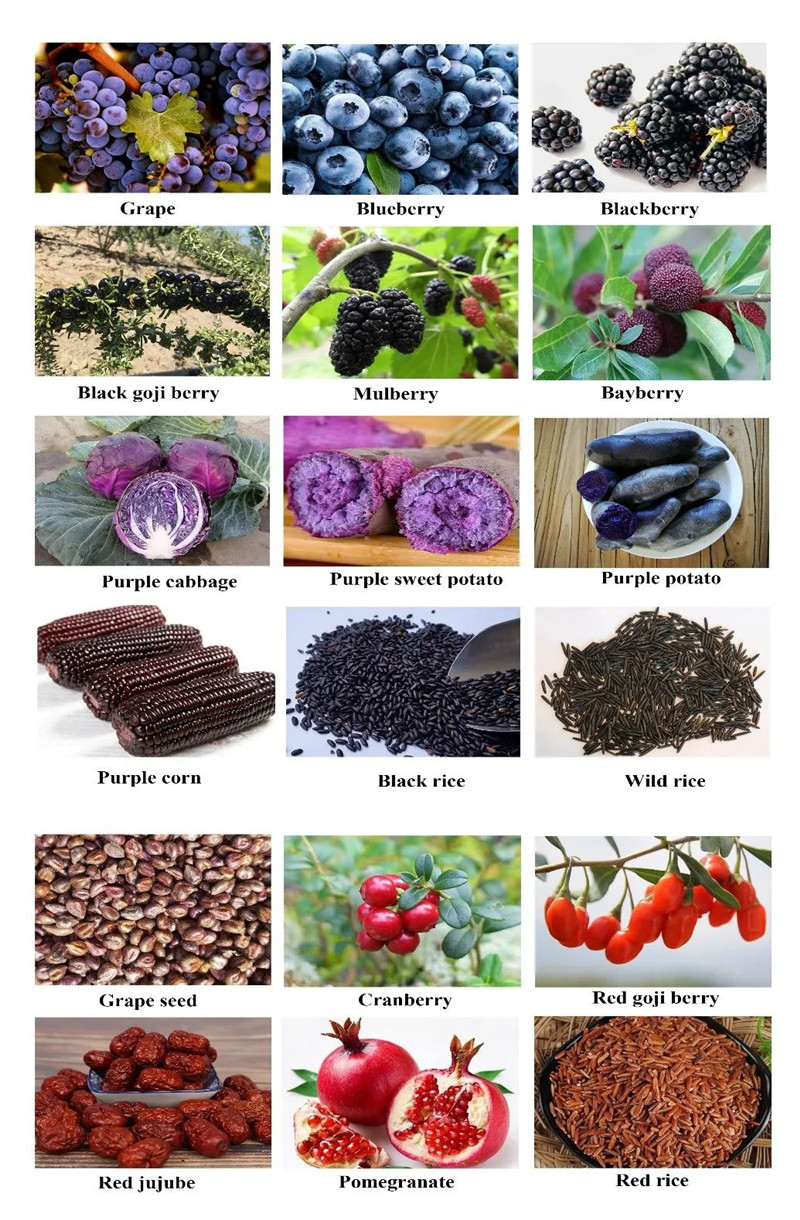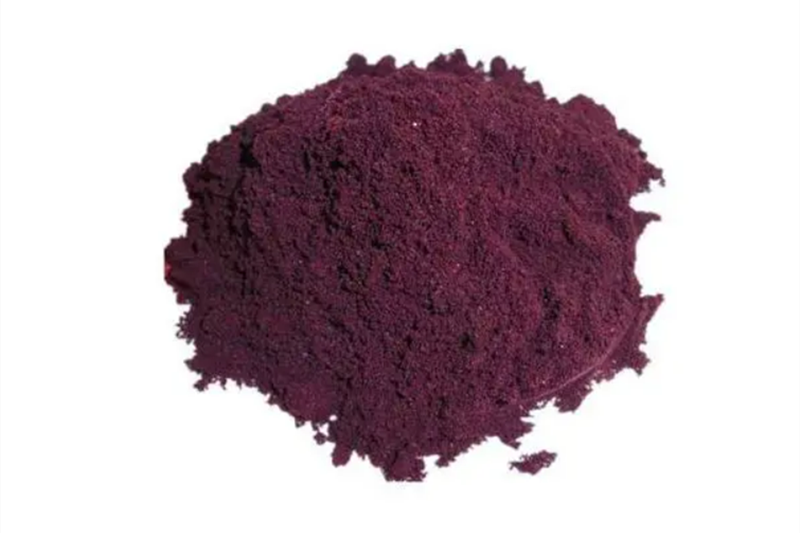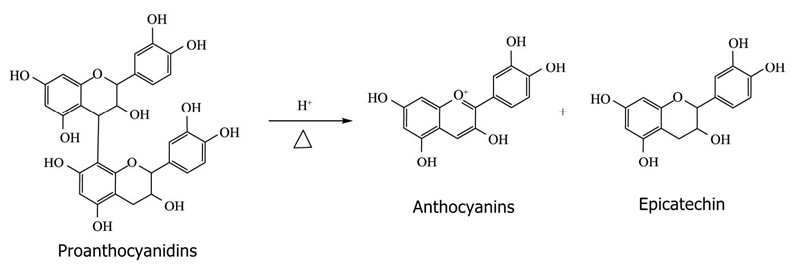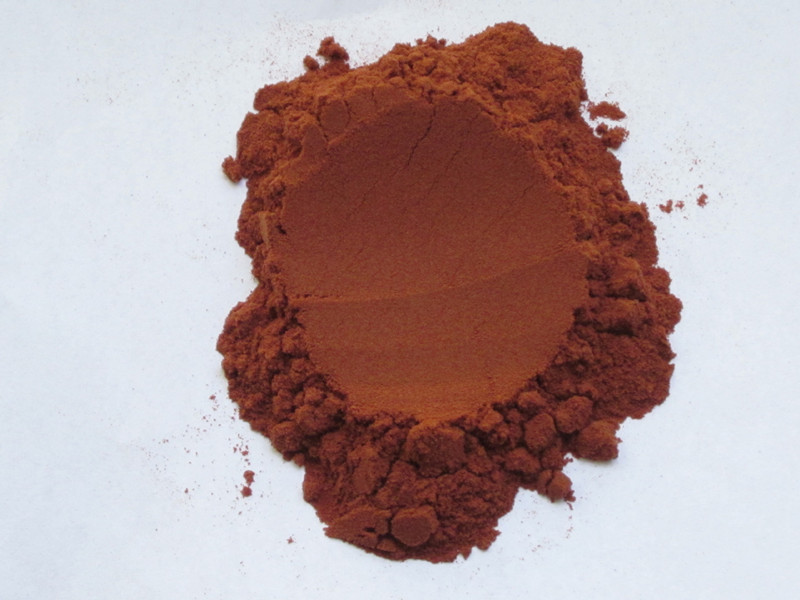Anthocyanins and proanthocyanidins are two types of flavonoids that are known for their powerful antioxidant properties and numerous health benefits. These compounds are found in a variety of plants, including fruits and vegetables and other plant-based foods. In this article, we will explore the health benefits of anthocyanins and proanthocyanidins, and how they can be incorporated into your diet for optimal health.
What Are Anthocyanins and their benefits?
Anthocyanins are a type of flavonoid and natural pigment that gives many fruits and vegetables their red, blue, and purple colors. These compounds are found in high concentrations in berries, cherries, grapes, and other brightly colored fruits and vegetables. It is also considered as a natural food colorant and has value-added properties, including antioxidants, nutraceutical benefits, antimicrobial effects, and health promotion. Some of the health benefits of anthocyanins include:
Antioxidant Properties: Anthocyanins are powerful antioxidants that help to protect cells from damage caused by free radicals. Free radicals are unstable molecules that can damage cells and contribute to the development of chronic diseases such as cancer, heart disease, and Alzheimer’s disease.
Anti-Inflammatory Properties: Anthocyanins have anti-inflammatory properties that help to reduce inflammation throughout the body. Chronic inflammation has been linked to a number of health problems, including arthritis, diabetes, and heart disease.
Cardiovascular Health: Anthocyanins may help to improve cardiovascular health by reducing blood pressure, improving blood flow, and reducing inflammation in the arteries. Studies have also shown that anthocyanins extract can help to reduce cholesterol levels and improve lipid profiles, which are important factors in the prevention of heart disease.
What Are Proanthocyanidins and their benefits?
Proanthocyanidins are another type of a flavan-3-ol-containing polymerare found in a variety of fruits, vegetables, and other plant-based foods. They are flavonoids in the reddish purple to blue-purple range that are derived from a variety of fruits and vegetables, including grapes, strawberries, apples, and oranges.
These compounds are found in high concentrations in grape seeds, cocoa, cranberries, red wine and certain types of nuts. They have been linked to several health benefits including anti-mutagenic (Duan et al. 2011), wounding healing, and antihyperglycemic activity (Montagut et al. 2010), immune modulation, DNA repair as well as anti-allergic and anti-inflammatory activities. Some of the health benefits of proanthocyanidins include:
Antioxidant Properties: Like anthocyanins, proanthocyanidins are powerful antioxidants that help to protect cells against oxidative stress, which can result in a variety of health problems. These compounds are particularly effective at scavenging free radicals and preventing oxidative damage to cells.
Anti-Inflammatory Properties: Proanthocyanidins extract has strong anti-inflammatory properties that help to reduce inflammation throughout the body. This can help to reduce the risk of chronic diseases such as arthritis, diabetes, and heart disease.
Skin Health: Proanthocyanidins may help to improve skin health by protecting against UV radiation and reducing inflammation in the skin. Studies have shown that proanthocyanidins can help to reduce the appearance of wrinkles, improve skin elasticity, and protect against sun damage.
What are the differences between anthocyanins and proanthocyanidins?
Different chemical structures
Anthocyanins are flavonoid compounds, which are pure substances composed of two or more elements. Proanthocyanidins are polyphenols belonging to oligomers with small molecular structures. Compared with anthocyanins, proanthocyanidins are more complex because they have multiple linkages between monomeric units and differ in the degree of polymerization and galloylation. This has led to many different proanthocyanidin profiles, some of which may be beneficial for specific conditions such as cancer, cardiovascular disease, atherosclerosis, and obesity.
Different parts of the source
Proanthocyanidins are widely found in skins, shells and seeds, such as grape seeds, apple peels and peanut peels. As a water-soluble natural pigment, anthocyanins are mainly found in many fruits and vegetables such as blueberries, cherries, grapes, blackcurrants and so on. People eat less skin, shells, seeds and so on in their diet, so it is easier to get anthocyanins through food. They are also one of the main pigments that make up the color of petals and fruits, so the extract from different source offer different colours.
Fig: Proanthocyanidins from grape seeds
Anthocyanins and proanthocyanidins are two types of flavonoids that offer numerous health benefits, including antioxidant and anti-inflammatory properties, and improvements in cardiovascular health and skin health. Although the structure is different, but they have similar properties and they are antioxidants that protect human cells from free radical damage, proanthocyanidins can be heated in an acidic medium to produce anthocyanin. They protect your cardiovascular system by reducing the level of inflammatory molecules, such as cytokines, in your blood. They can also increase the level of nitric oxide in your arteries. This can improve artery function by relaxing blood vessels.
How to Incorporate Anthocyanins and Proanthocyanidins into Your Diet
There are many ways to incorporate anthocyanins and proanthocyanidins into your diet. Some of the best food sources of these compounds include:
- Berries (such as blueberries, raspberries, and strawberries)
- Cherries
- Grapes (especially red and purple grapes)
- Red wine
- Cocoa and dark chocolate
- Nuts (such as almonds and walnuts)
- Red onions
To get the most health benefits from these compounds, it is important to eat a variety of brightly colored fruits and vegetables, and to choose whole, minimally processed foods whenever possible.
- Dandelion Extract: What It Is, Benefits, Uses and Side Effect - April 23, 2024
- Is Berberine Extract Help For Weight Loss? - April 11, 2024
- Why Is Pysllium Husk Powder A Popular Meal Replacement Ingredient? - April 3, 2024






